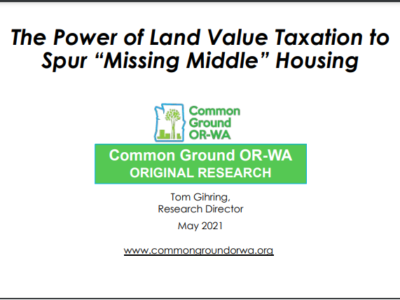Incentive Property Taxation Can Help Prevent Neighborhood Blight
Tom Gihring
Common Ground OR/WA
Seattle, Washington
August 1999
“A property tax reform adopting a differential rate would tax mainly the value created by the community at large (land values), not the capital invested by individual owners (improvement values). As a result of placing a higher tax rate on land assessments, it could become too costly to hold onto underutilized or deteriorated sites. Likewise, a proportionately lower tax rate on improvement assessments would encourage owners to repair or replace obsolete buildings. The widespread response to the fiscal inducement to reduce the land-to-building value ratio would lead to the development of infill sites and the upgrading of neighborhoods. Individual owners will now be willing to take the risk of investing in property improvements because they are assured that everyone in the community receives a similar tax incentive.”




